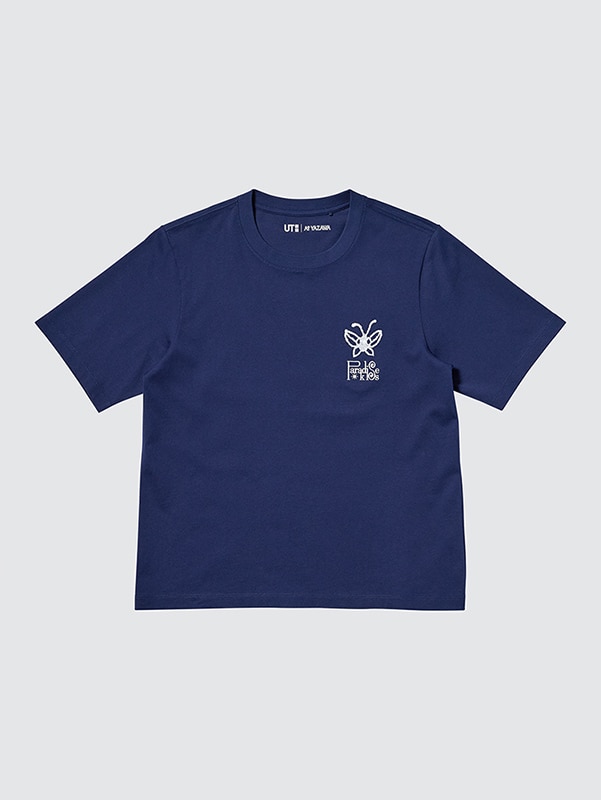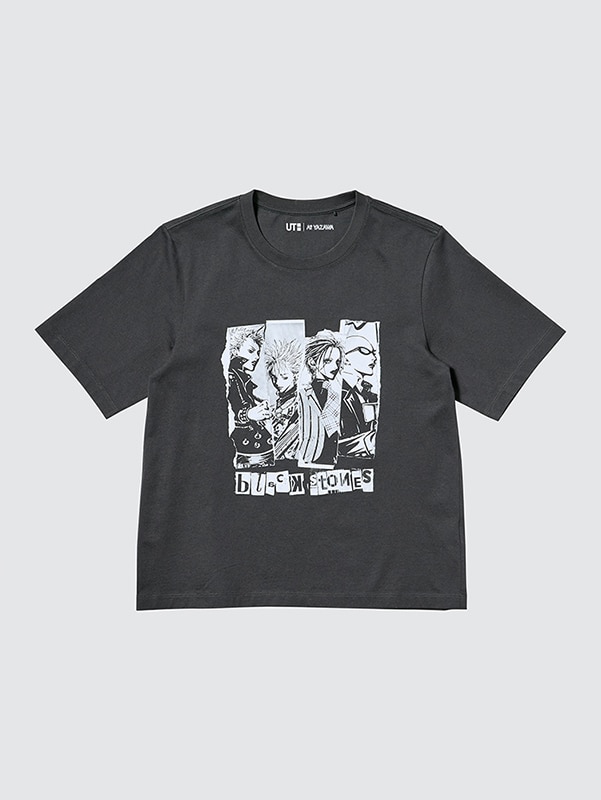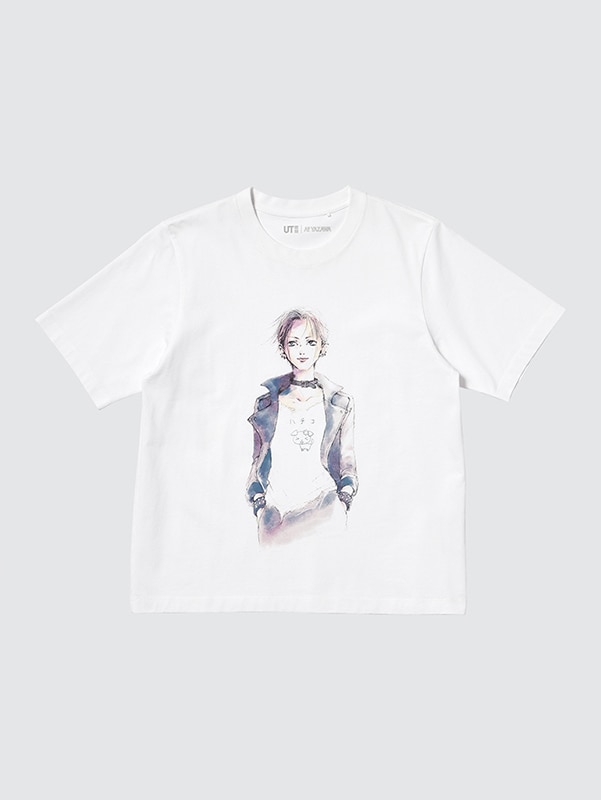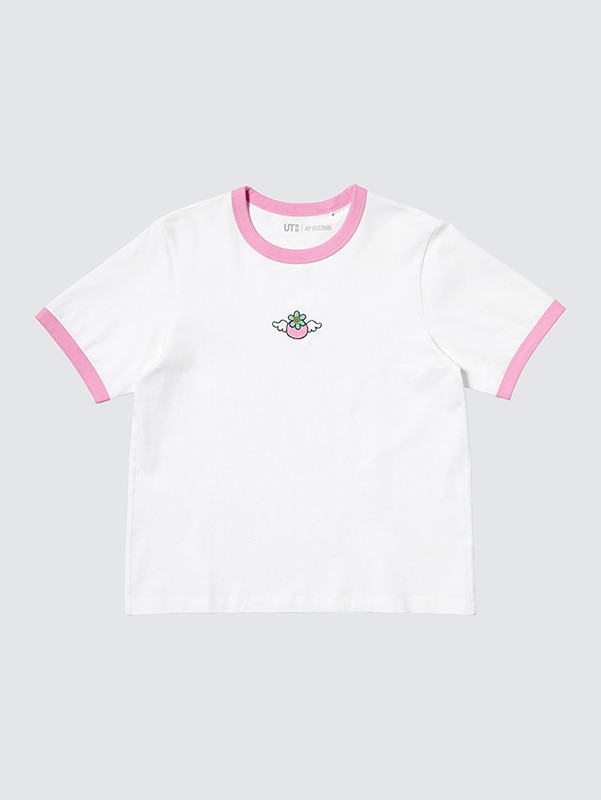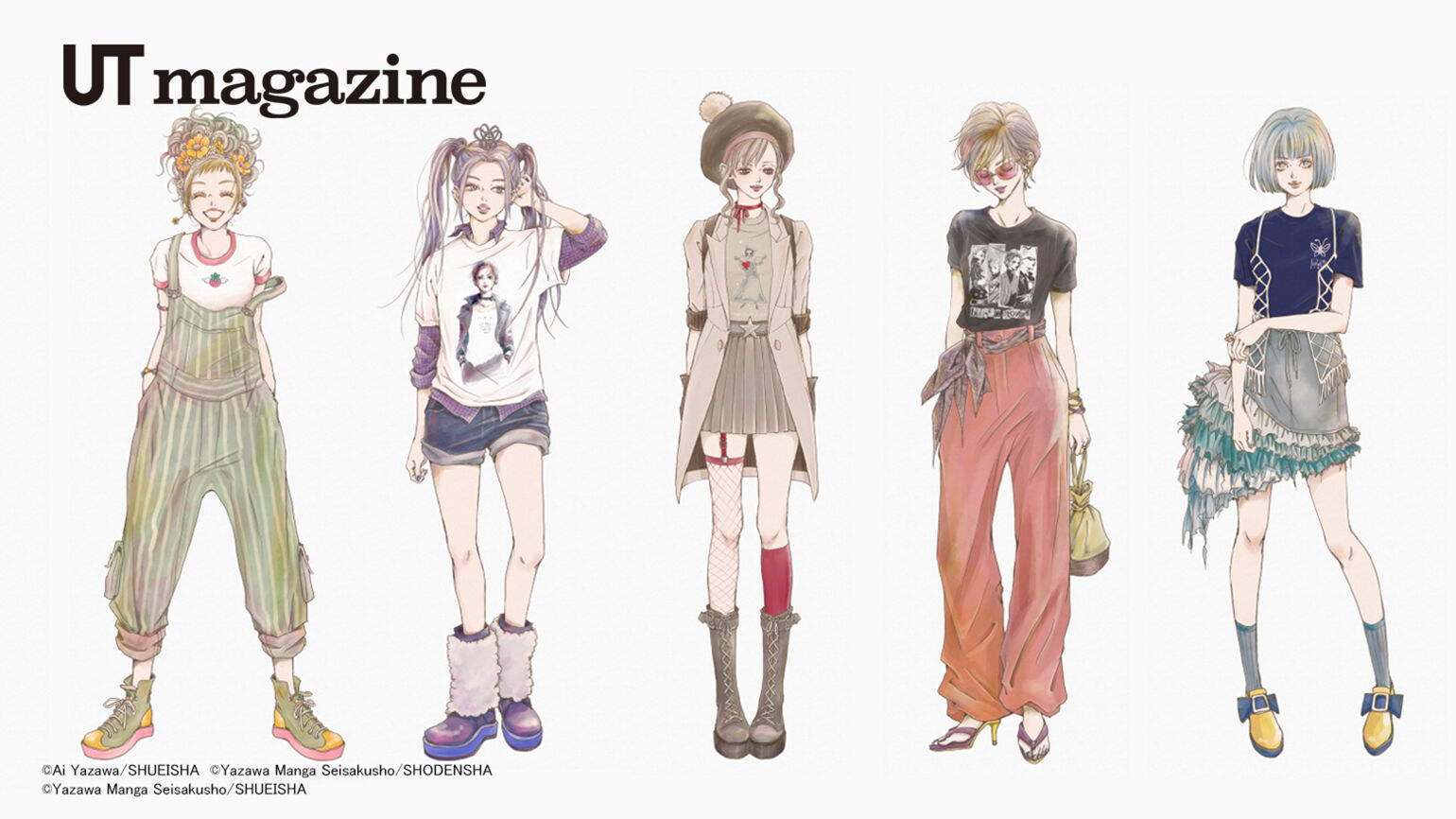
Why Ai Yazawa's Works Are Beloved Worldwide
Aug 08, 2025
UT
View items
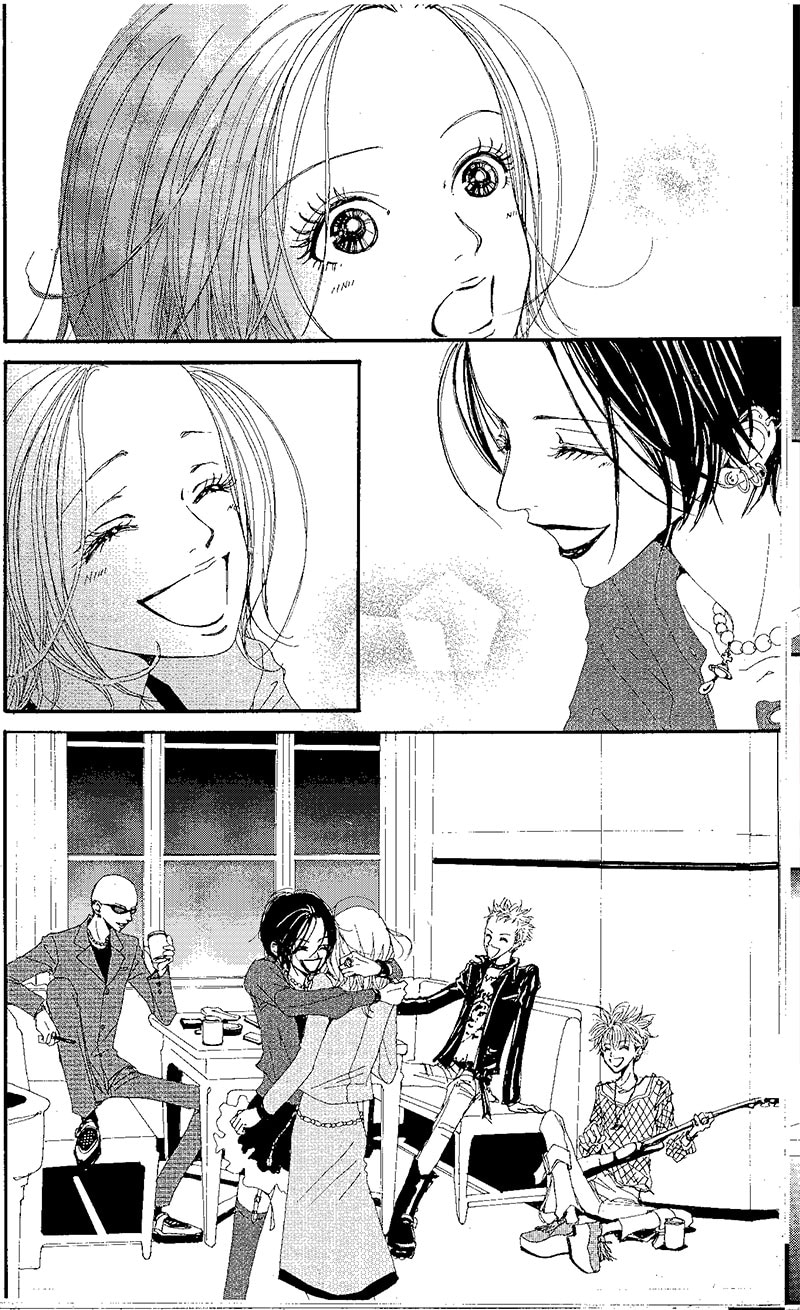
NANA 3
Tale of Youth: Enjoying Love and Fashion While Growing Through Setbacks
Ai Yazawa's manga, which will celebrate its 40th anniversary debut in 2025, has been translated and beloved not just in Japan but worldwide. The works featured in this UT collaboration, published in the 1990s and 2000s, continue to captivate not only readers who experienced them in real-time but also Generation Z girls, especially with the recent Y2K boom. Even after more than 20 years, these works shine with undiminished brilliance. While the settings vary, all these works share common elements: compelling characters who drive captivating stories, stylish and realistic fashion, and a sophisticated worldview. Built around the classic shojo manga foundation of romance, they explore ‘pursuing dreams’, ‘living authentically’, and ‘different forms of happiness’ from various perspectives.
Imperfect Human Characters
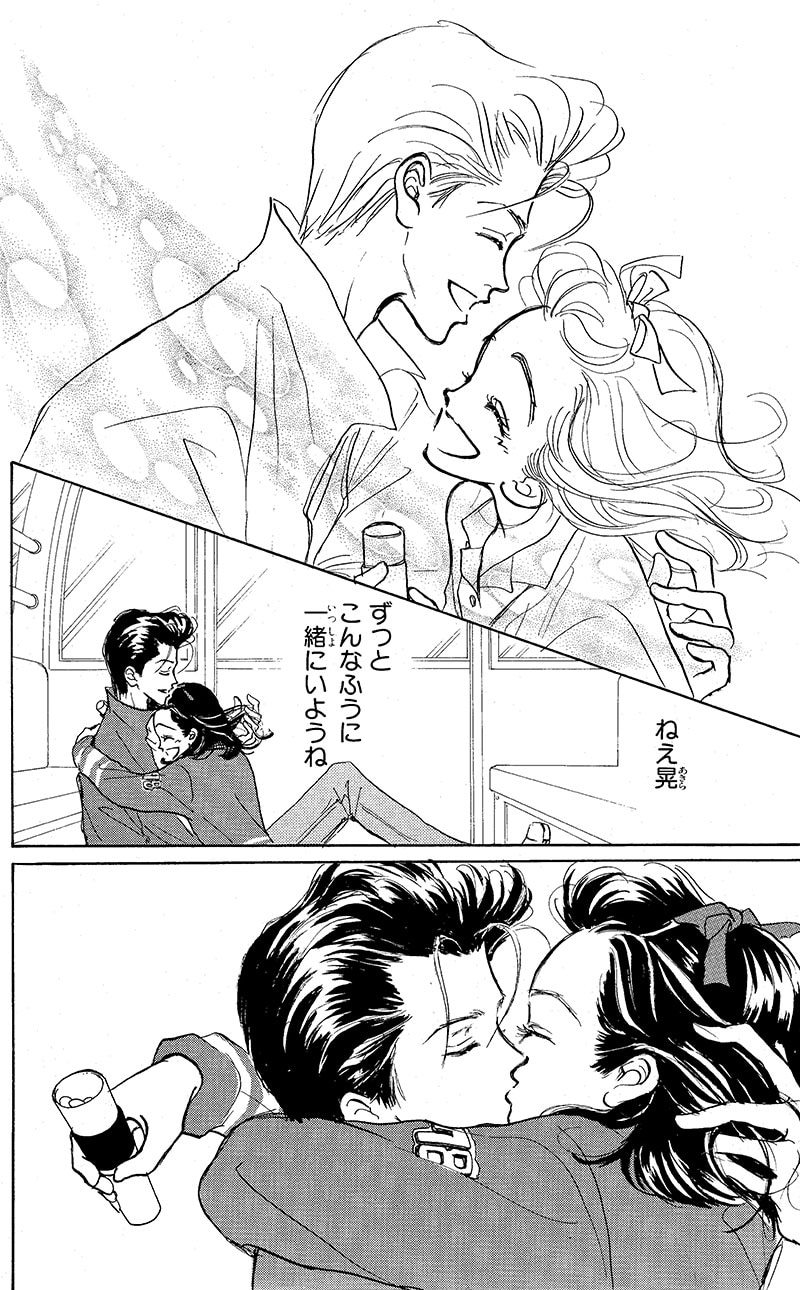
Tenshi Nanka ja Nai 2
Just as every human has weaknesses, selfishness, jealousy, and cowardly moments, the characters in Yazawa's works are never perfect—they have flaws. That's what makes them so human. Midori Saejima, the protagonist of Tenshi Nanka ja Nai, is bright, positive, and popular with everyone, but she worries about love, sometimes doubts, gets jealous, and can be mean. She's not just an angel—she's an ordinary girl trying to protect her happiness. Conversely, even characters you might initially dislike are often just putting on a tough front, hiding their adorable sides and clumsy kindness that they don't show others. Every character portrayal feels real. This realism comes not only from the protagonist's perspective but also through the objective viewpoints of those around them, like in NANA, where Junko, who watches over Hachi (Nana Komatsu) with both kindness and strictness, helps reveal the protagonist's inner world even more clearly.
What Matters Is Being True to Yourself
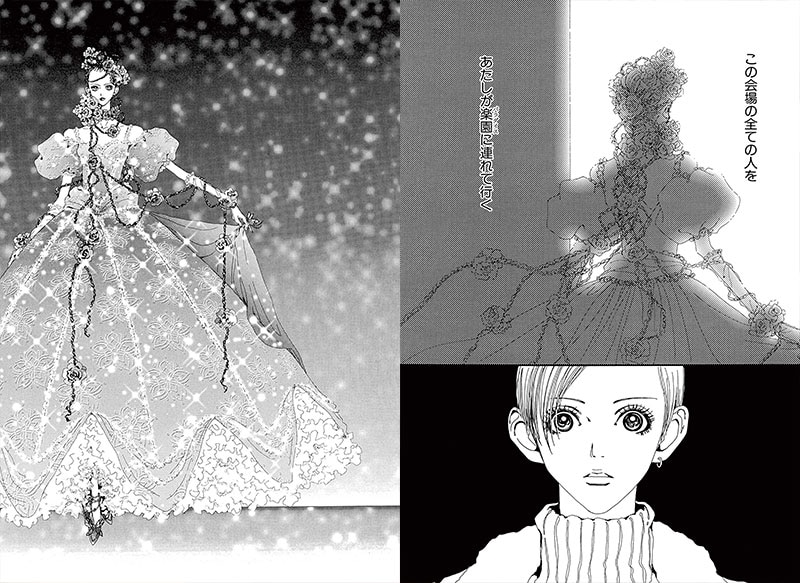
Paradise Kiss 4
The works are also open to diversity, which has now become commonplace. Mikako Koda from Gokinjo Monogatari has loved fashion since childhood and has a strong personality, always standing out from her peers. Despite being constantly excluded, at Yazawa Art Academy, she's not an outsider—instead, she makes her world shine and her talents bloom. Yukari Hayasaka from Paradise Kiss transforms from a stagnant high school life when she meets passionate friends pursuing their dreams, learning to choose her own path in life. Through these characters, the stories encourage us that it's okay to be different, it's okay to live authentically. They teach us the meaning of loving ourselves and valuing who we are.
Love and Dreams, Different Forms of Happiness
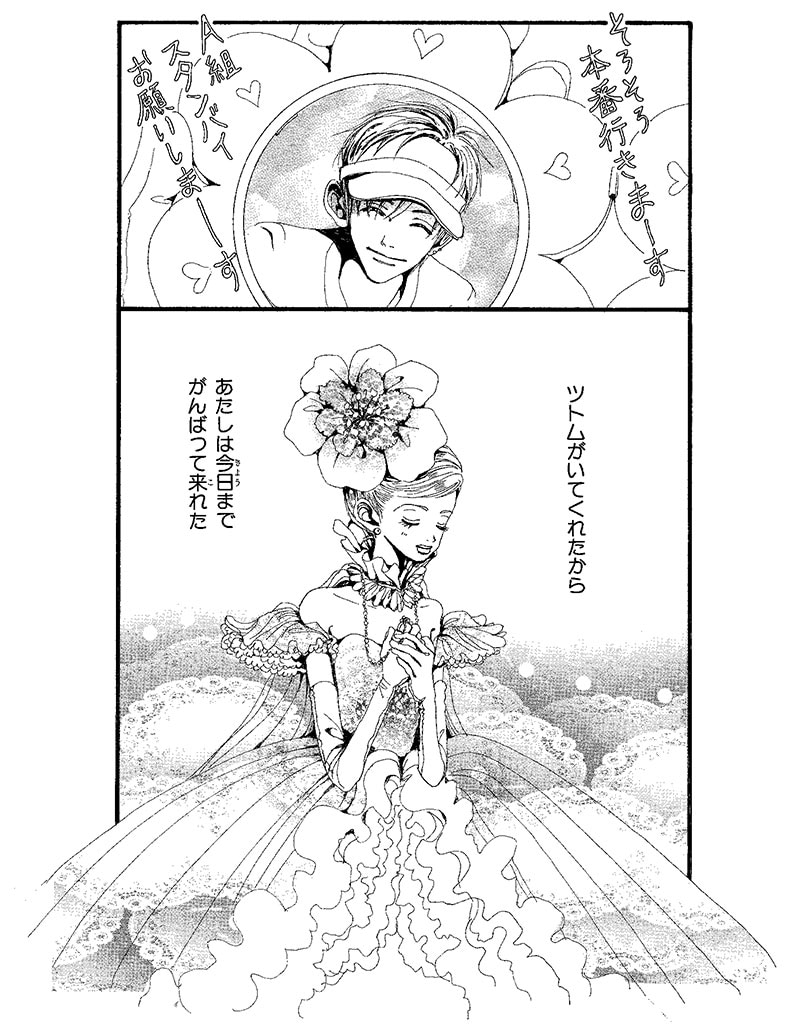
Gokinjo Monogatari 5
The works provide hints for the dilemma many women face: "Should I choose love or dreams?" In Gokinjo Monogatari, Lisa chose to love without hesitation, while Mikako, aspiring to be a fashion designer, agonizes before being encouraged by her childhood friend and boyfriend, Tsutomu Yamaguchi, to pursue her dreams. True to the famous quotes "Whether you can realize your dreams depends on how much action you take toward them" and "What I want isn't a happy ending—it's a well-trained happy mind," she ultimately achieves both dreams and love, finding happiness. Paradise Kiss shows another form of happy ending when Yukari and her boyfriend George mutually agree to go their separate ways.
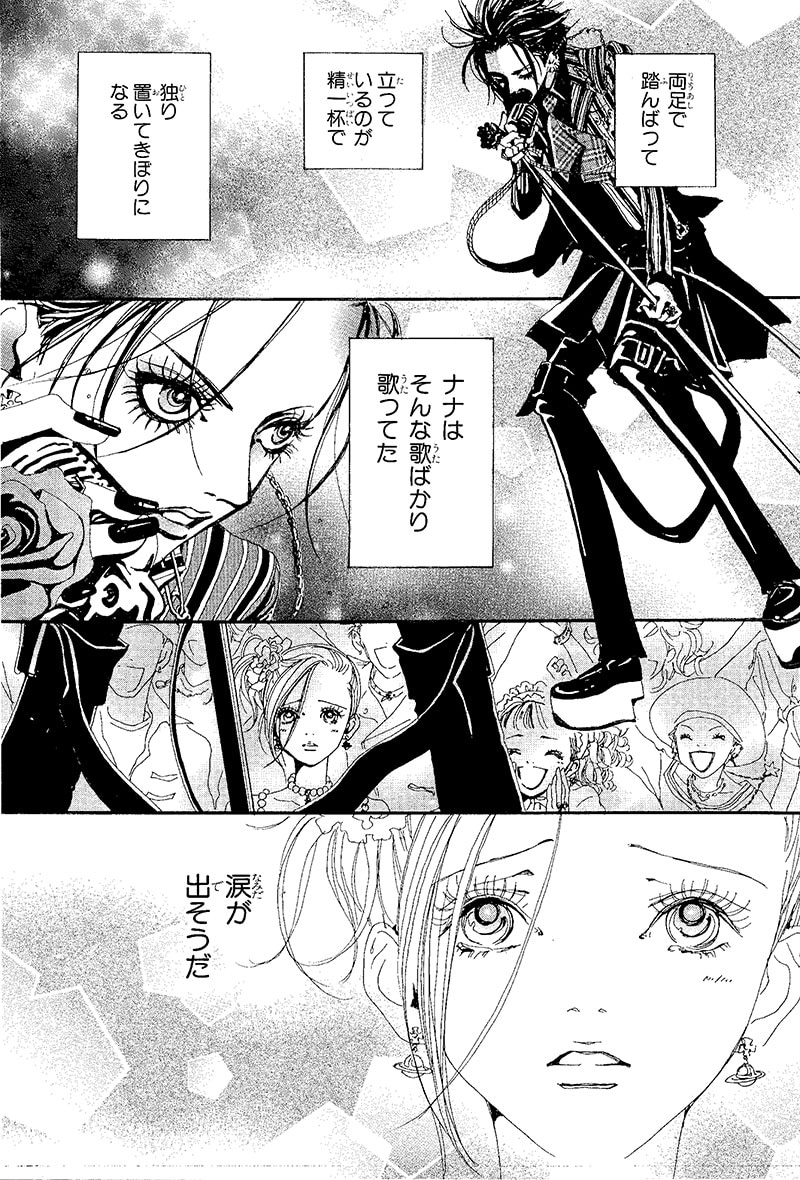
NANA 4
In NANA, which can be considered the culmination of her work, we see two women bound by strong friendship: the stoic Nana who lives uncompromisingly for her dreams, and another Nana (Hachi) who drifts through life following her heart in love. As they support each other while harboring unfulfilled hearts and chasing unreachable hopes, they continue to make choices at life's crossroads. Love, dreams, and values of happiness are different for everyone. In every story, the protagonists worry, fail, and suffer while growing, just like us readers. These fluctuating emotions are expressed through the overwhelming power of words and art, piercing monologues, and delicate touches that capture rich expressions and gestures. Before you know it, you're naturally drawn in, empathizing, and emotionally invested.
A Treasure Trove of Fashion & Culture
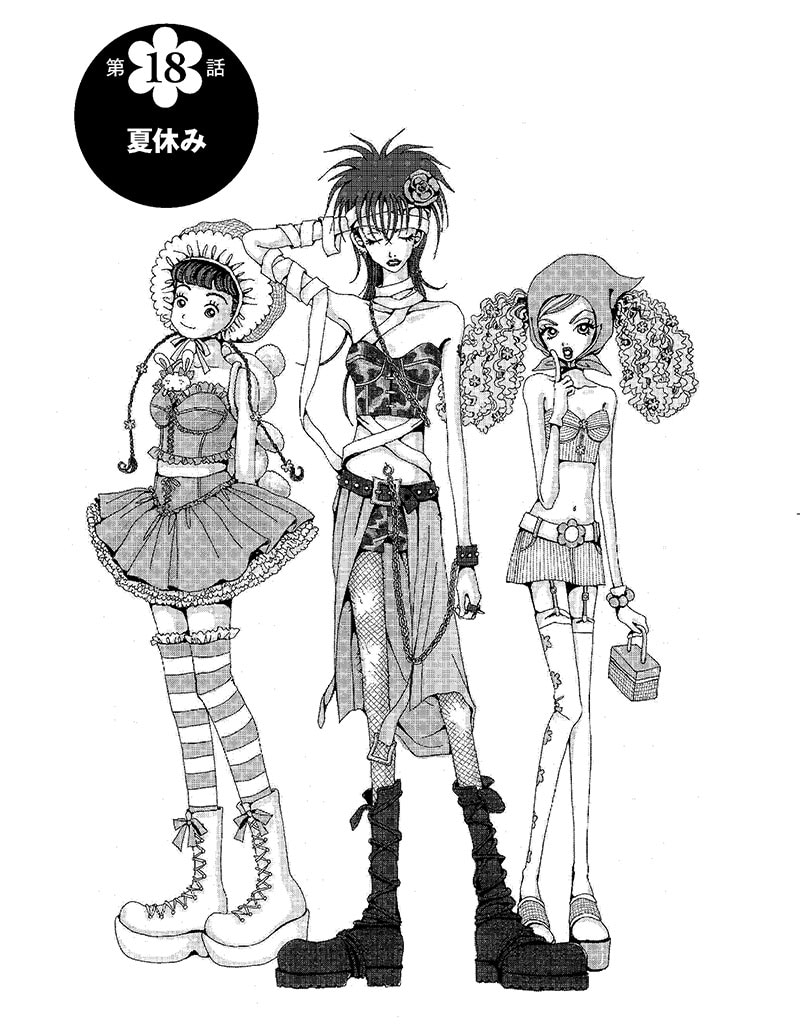
Gokinjo Monogatari 3
The fashion, hairstyles, and makeup of the characters, along with the music they listen to, their room interiors, and favorite shops—their entire world is incredibly stylish. Through these stories, you can discover new cultures you never knew existed. The 1990s and 2000s, when these works were created, were times when Tokyo's Harajuku became the center of uniquely Japanese pop street fashion and culture like Ura-Harajuku and "kawaii," attracting worldwide attention. Just by reading the manga, you can feel the trends and atmosphere of that era. Gokinjo Monogatari perfectly captures this world. The diverse styles of young people attending Yazawa Art Academy and aspiring to be designers and creators—60s retro-pop, kogal (trendy teenage girls), skater, punk, hip-hop, American casual, grunge—are all worth emulating.
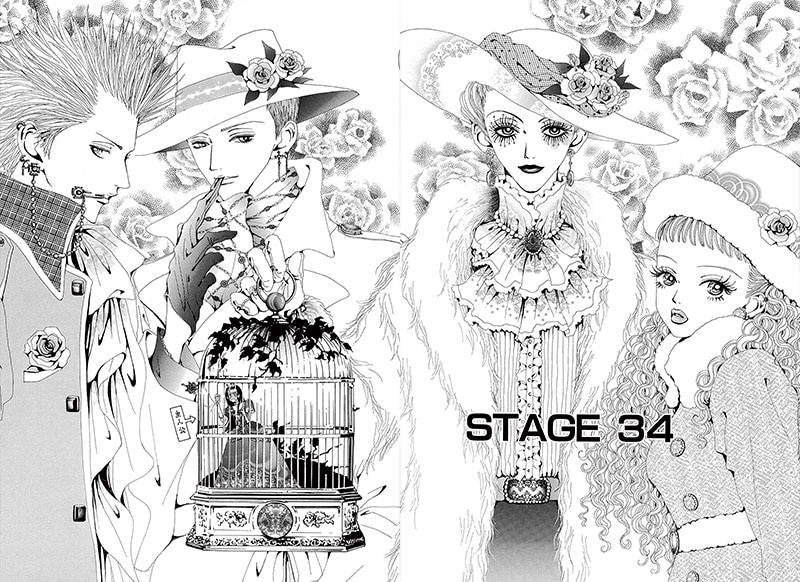
Paradise Kiss 4
In Paradise Kiss, you learn about the gorgeous world of haute couture, not just ready-to-wear fashion, and since it was serialized in the fashion magazine Zipper, you get glimpses behind the scenes of the fashion industry, including fashion photo shoots.
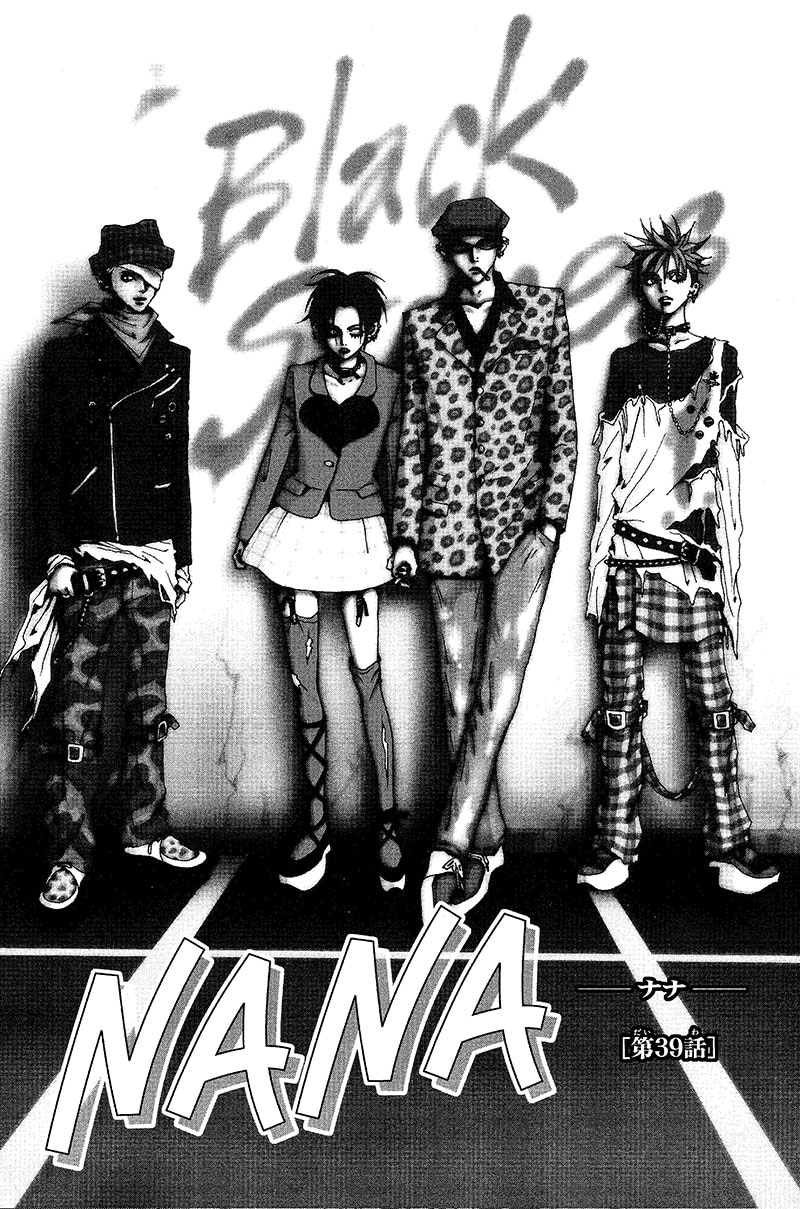
NANA 11
Meanwhile, NANA features the impressive punk fashion of Nana and her band members, influenced by 1970s London Street style—bondage pants, leather jackets, and work boots. Iconic items from Vivienne Westwood, the queen of British punk, frequently appear, including Rocking Horseshoes, orb logo rings, and lighter pendants. The room where Nana and Nana (Hachi) live has a European apartment atmosphere with brick buildings, vintage furniture, and clawfoot bathtubs. Yazawa's works are packed with aspirations for stylish culture, from fashion to music.
Introducing T-Shirt Graphics with Fun Facts
The storylines of the four works featured in the UT Collection explain the visuals from each work that inspired the T-shirt designs, along with fun trivia. Also unveiling exclusive coordinate illustrations specially drawn by Ai Yazawa herself!
Tenshi Nanka ja Nai (I'm Not an Angel)
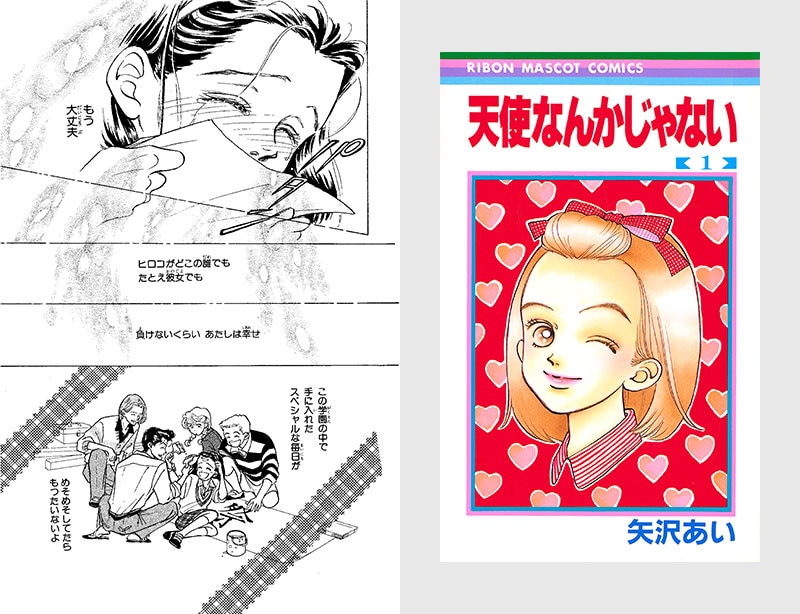
Tenshi Nanka ja Nai 1
A school love story serialized in the manga magazine Ribon from 1991-1994, set in a new school with only first-year high school students. The protagonist, Midori Saejima, is always bright, energetic, and popular with everyone, and elected as student council vice president. The president is Akira Sudo, recognizable by his pompadour hairstyle, whom Midori fell for at first sight. With slightly difficult honor student Mami-rin (Yuko Mamiya), the gentle and handsome Takigawa-man (Shuichi Takigawa), and Midori's middle school classmate Bunta (Kono), their activities start together as members of the student council. The story vividly portrays Midori and her friends enjoying school life while worrying about Akira's relationship with their art teacher Maki-chan, and struggling with love, friendship, and their futures.
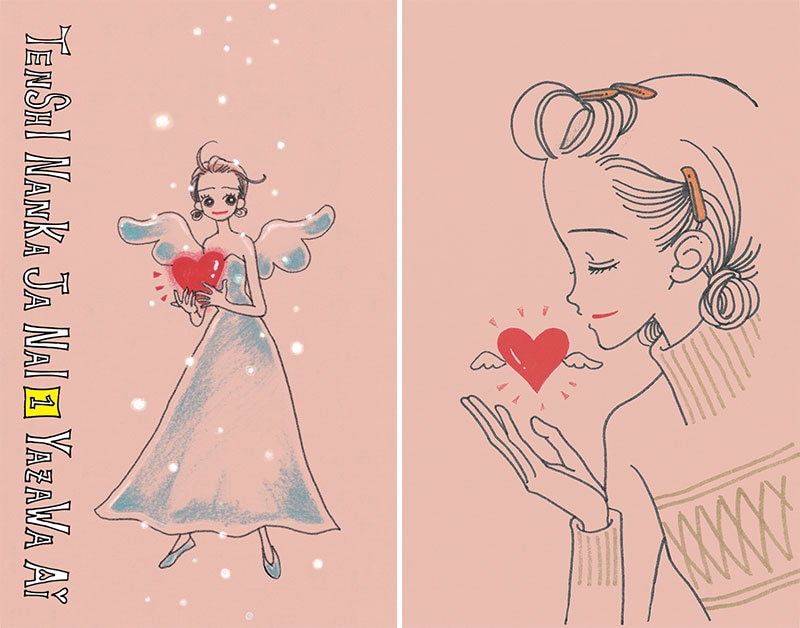
The T-shirt graphic features the cover illustration from Tenshi Nanka ja Nai Cobalt Bunko Volume 6 on the front. It shows the angelic Midori holding a heart, embodying her nickname ‘Angel Saejima’, which represents her trademark smile. For Midori, ‘Angel Saejima’ is the ultimate compliment, and angels are her symbol. Angels appear throughout the work in various forms, like the angel wing necklace Akira gave Midori for her birthday, and the song title ‘Angel's Smile’ created by Narikawa Ken, a middle school classmate and band member who has a crush on Midori. Incidentally, Tsutomu Yamaguchi, Mikako's childhood friend in Gokinjo Monogatari, is said to resemble Mambo's Ken after his professional debut.
Ai Yazawa's Recommended Coordinate
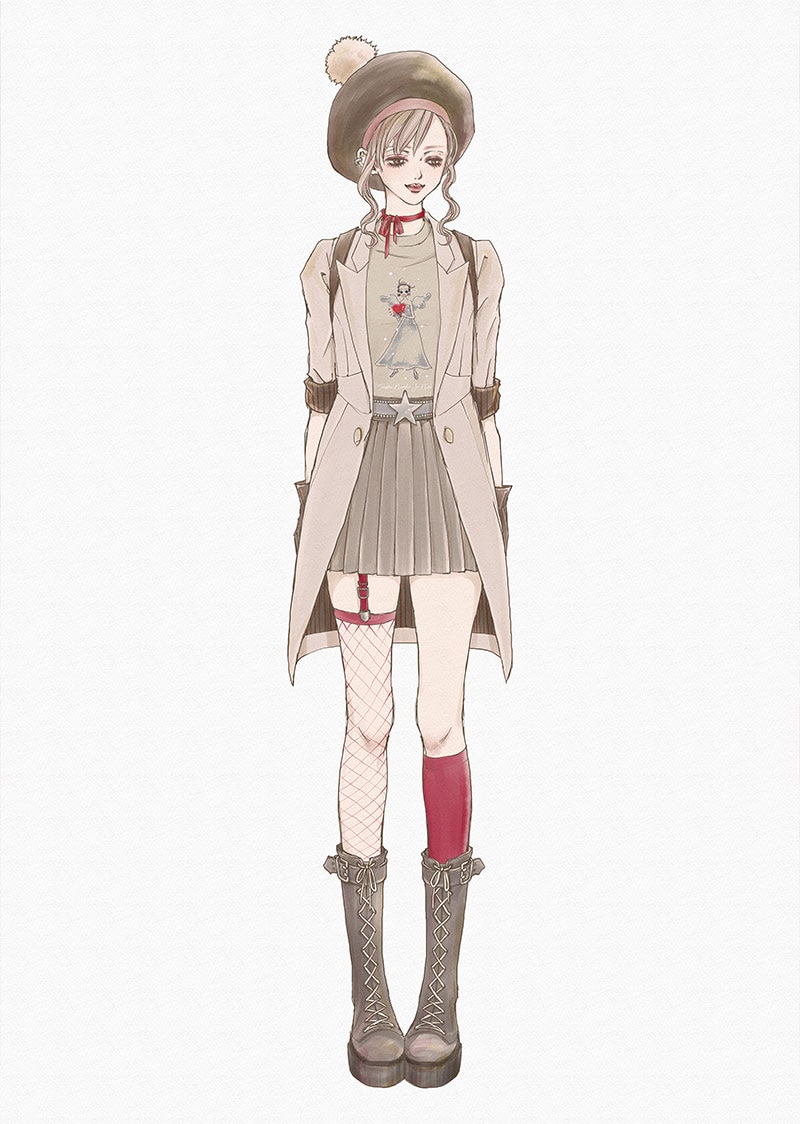
A beige tone coordinate featuring the T-shirt. The accent color red, linking with the heart, is incorporated through high socks, knee-high socks, garter belt, and choker ribbon. The key points of this schoolgirl-style outfit are the compact silhouette with volume at the top and bottom, with a beret and lace-up boots.
Gokinjo Monogatari (Neighborhood Story)

Left: Gokinjo Monogatari 5 RIight: Gokinjo Monogatari 1
The protagonist Mikako Koda dreams of becoming a fashion designer and owning her brand shop. She attends Yazawa Art Academy's fashion design course, spending busy days working on assignments. Her next-door neighbor and childhood friend, Tsutomu Yamaguchi also attends the same school and has been together since birth. The two are finally beginning to realize their feelings for each other. They experience student life together with their unique friends who study fashion and art. While pursuing their dreams full throttle, they also give their all to love and fashion, growing into adults. Serialized in Ribon from 1995-1997, it became explosively popular with a TV anime adaptation in 1995 and an anime film in 1996. The retro-pop fashion and their hair and makeup that colors the story still feels fresh today.
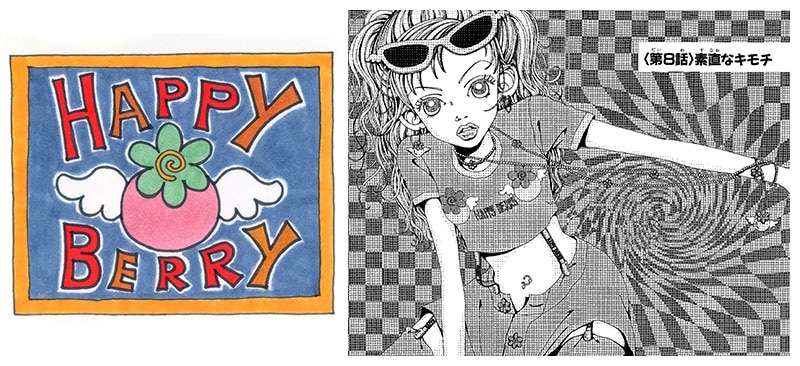
Right:Gokinjo Monogatari 2
When Mikako and her friends decide to participate in a flea market at their self-made store ‘AKINDO’, she debuts her fashion brand ‘Happy Berry’. She aims to create clothing that energizes and makes people happy. Though nothing sold at the flea market, and she was upset, she was overjoyed when a ‘Happy Berry’ motif backpack finally sold. The first customer turned out to be Midori from Tenshi Nanka ja Nai—what a surprise! The UT T-shirt features the ‘Happy Berry’ symbol mark of an angel strawberry.
Ai Yazawa's Recommended Coordinate

A boyish casual style pairing loose striped painter overalls with the ‘Happy Berry’ work boots and the T-shirt. The flower motif hair accessories and earrings add a sweet accent to the look.
Paradise Kiss
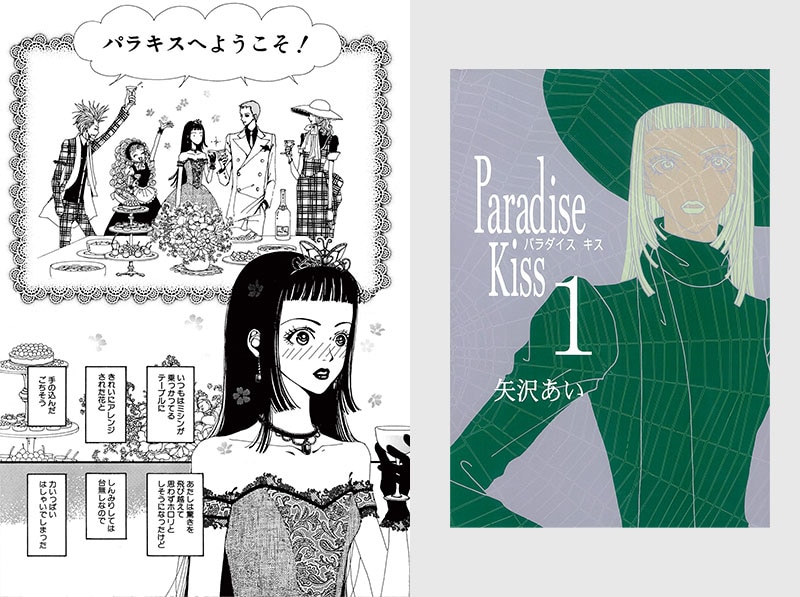
Paradise Kiss 1
Yukari Hayasaka, a third-year high school student at a prestigious prep school preparing for university entrance exams, is one day asked by Yazawa Art Academy students she meets on the street to model for their school festival fashion show. She enters the world of George, who aspires to be a designer, along with Miwako (Mikako's sister from Gokinjo Monogatari) who makes his clothes, Arashi (son of Lisa, Mikako's friend), and Isabella. Though they initially seemed like people from another world, Yukari gradually becomes influenced by their passion for clothing creation, bringing change to her stagnant daily life. Awakening to love and dreams, she tries to carve out a new path. The story depicts Yukari's journey and her romance with the uncompromising George through the meticulously crafted world of fashion, featuring unique characters. Serialized in the fashion magazine Zipper from 1999-2003, it was adapted into a TV anime in 2005 and a live-action film in 2011.
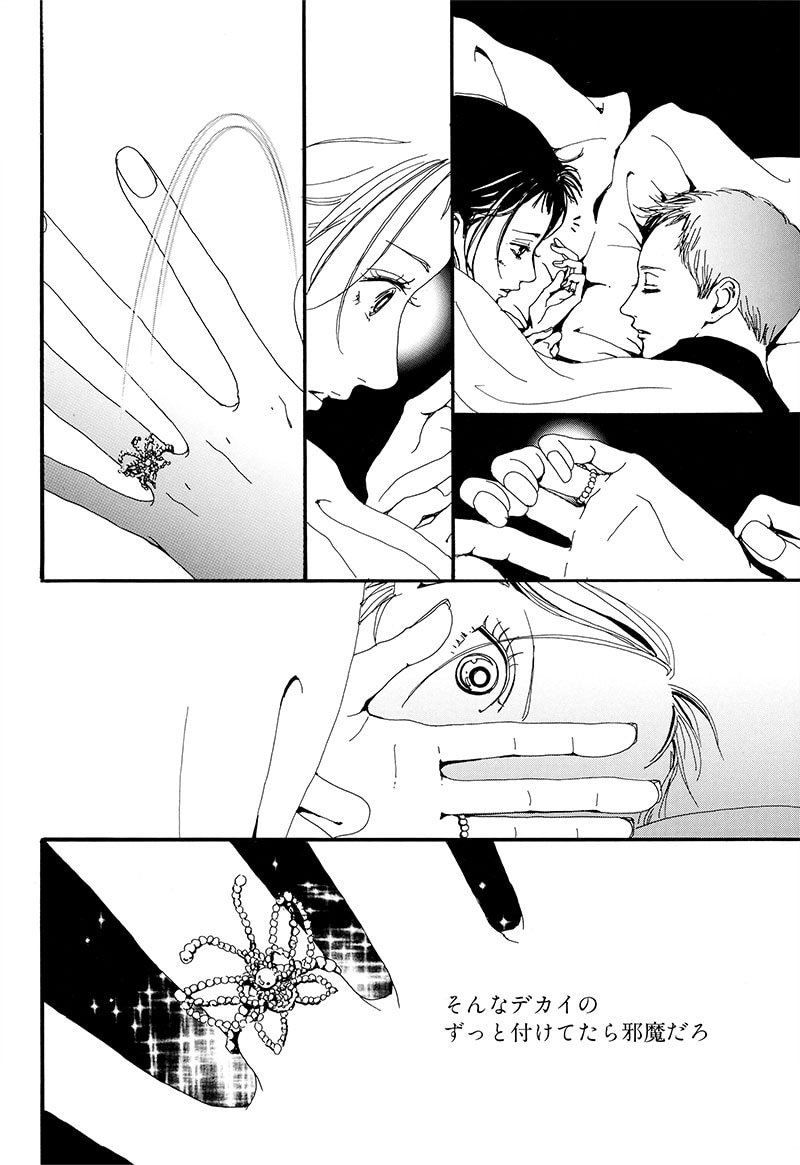
Paradise Kiss 3
The brand ‘Paradise Kiss’ was designed by George with patterns by Isabella, sewn by Miwako and Arashi. The dress created for the school festival fashion show features bead-embroidered flowers all over, with blue roses in the hair and around the neck as accessories. George's statement butterfly ring adorns the fingertips. Inspired by this show outfit, the T-shirt features the ring's butterfly motif on the chest with the brand logo in print. For the aspiring designer George, Yukari was his lover, model, and muse who wore his clothes exactly as he envisioned.
Ai Yazawa's Recommended Coordinat

A simple one-point design T-shirt paired with a voluminous ruffled asymmetrical mini skirt, layered with a crochet fringe vest for a girly finish. Styled elegantly with socks and large ribbon buckled shoes.
NANA
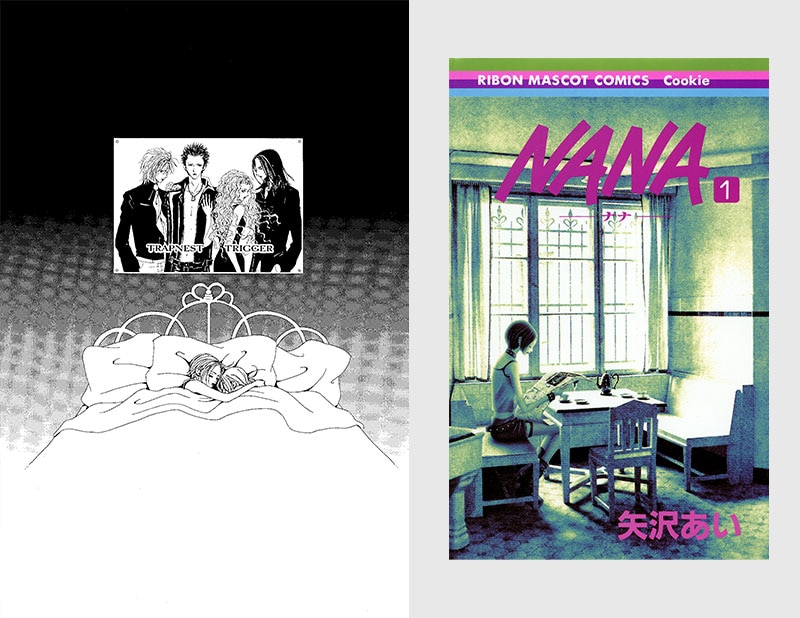
Left: NANA 4 , Right: NANA 1
Nana Komatsu (called Hachi) moves to Tokyo to be with her friends and boyfriend. Nana Osaki comes to Tokyo with a strong determination to succeed in music after a painful breakup with her boyfriend Ren. The two meet by chance on the train to Tokyo. Though complete opposites in appearance, personality, and backgrounds, they hit it off and later reunite by fate, eventually living together. Nana (Hachi) lives for love, while Nana pursues dreams. Their Tokyo life, which should be full of hope, faces harsh realities and challenges ahead. Nana (Hachi) admires Nana, and Nana lovingly treasures Nana (Hachi)—their bond transcends friendship, characterized by mutual need and love. The complex relationship between Nana's band BLACK STONES (BLAST) and TRAPNEST adds dramatic development. What fate awaits the two NANAs? Starting with two one-shots in 1999, regular serialization began in Cookie in 2000. Live-action films were released in 2005 and 2006, with a TV anime in 2006, creating a massive boom.

Right: NANA 10
Nana Komatsu and Nana Osaki meet on the train to Tokyo and become roommates by chance. On their first day of cohabitation, during their shopping, Nana calls the friendly but high-maintenance Nana ‘dog-like’, giving birth to the nickname Hachi, inspired by Hachi-ko. The T-shirt graphic features an original illustration of Nana wearing a "Hachi-ko" character T-shirt under a leather jacket. Room 707 ,where they lived together, the matching strawberry glasses they bought at the 100-yen shop—every memory is precious.
Ai Yazawa's Recommended Coordinate

Layering a checked shirt over the T-shirt with denim shorts to make a healthy look. Mouton boa boots add volume to the feet while keeping everything in purple tones with the shirt and twin-tail hair. A crown motif hair accessory with rhinestone gives the accent to the style.

NANA 4
While Hachi easily falls in love contrasts with Nana, who admires Sex Pistols' Sid Vicious. The Sex Pistols were a symbolic band of the British punk movement and charismatic figures. TRAPNEST guitarist and Nana's boyfriend Ren also wears a padlock necklace around his neck like Sid, with Nana who is holding the key to the lock. The T-shirt features with band graphic designed for the T-shirt. The band name ‘BLACK STONES (BLAST)’ comes from the cigarette brand that the leader and drummer Yasu smokes.
Ai Yazawa's Recommended Coordinate

The monochrome colors of the band T-shirt make a sophisticated, chic, grown-up style. The T-shirt is tucked into simple jogger pants with the waist marked by a scarf. Delicate thong mules add femininity to the look.
Ai Yazawa
Manga artist. Born in Hyogo Prefecture. She made her debut in 1985 with Ano Natsu (published in the early spring issue of Ribbon Original). Her major works include Tenshi Nanka Ja Nai, Gokinjo Monogatari, Kagen no Tsuki, and NANA (all published by Shueisha), as well as Paradise Kiss (Shodensha). In 2002, she received the Shogakukan Manga Award for NANA.
Manga artist. Born in Hyogo Prefecture. She made her debut in 1985 with Ano Natsu (published in the early spring issue of Ribbon Original). Her major works include Tenshi Nanka Ja Nai, Gokinjo Monogatari, Kagen no Tsuki, and NANA (all published by Shueisha), as well as Paradise Kiss (Shodensha). In 2002, she received the Shogakukan Manga Award for NANA.
Lineup
All items
TOP

